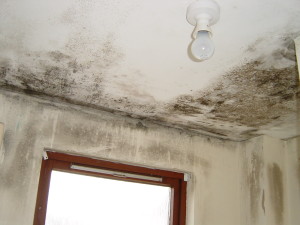 Damp is a major problem that can affect any house and hence you should detect it early and take urgent measures to remedy it. It can be a big problem if you live in an area that receives heavy rainfall. Since it causes several health and comfort problems, you cannot ignore it.
Damp is a major problem that can affect any house and hence you should detect it early and take urgent measures to remedy it. It can be a big problem if you live in an area that receives heavy rainfall. Since it causes several health and comfort problems, you cannot ignore it.
Problems caused by damp
Damp can aggravate respiratory problems. It may also encourage the growth of mite and mold. In addition, dampness can make your property unappealing and cold.
What causes dampness?
In many cases, poor maintenance is the biggest cause of damp. All forms of dampness indicate an underlying problem. You may notice damp in or around your walls, roof, doors, windows or pipe work. A damp patch inside the property is usually caused by a problem on the exterior.
Rising damp
Capillary action allows water from the ground to enter a structure. Note that water that affects your property through other routes cannot cause a rising damp. A chemical damp proof course will easily remedy a rising damp. Though this is a common problem, it is very often misdiagnosed. So, if you notice damp patches, you should get the property examined by a trained surveyor who can identify and understand the issue.
Signs of rising damp include crumbling plaster, decayed skirting boards, staining, discoloration, peeling paint and decayed timber floors.
When water rises from the ground, it may introduce contaminating chemical compounds into the plaster coats and walls. If that is the case, you will have to remove the plaster and replace it with specially made salt resistant plasters.
Penetrating damp
Penetrating damp is caused by water that enters the building and moves through the wall horizontally. Water that moves from higher to lower levels can also cause penetrating damp. It is usually caused by external construction defects. Defective guttering, faulty flashings and poor pointing can all cause penetrating damp. This is a common problem in older houses with solid walls. Cavity walls that are usually found in new homes offer better protection against penetrating damp. Without expert help, it is hard to pinpoint penetrating damp.
Damp patches on ceilings and walls are usually the first signs of penetrating damp. These patches may grow after prolonged periods of heavy rain. Besides damaging plaster, water penetration can encourage mold growth. Moreover, timber exposed to water decays faster.
What is condensation?
Moisture present in the air can also cause dampness. The air inside the house can have relatively high humidity due to activities like cooking, drying clothes etc. This moist air condenses when it gets in touch with cold surfaces like windows. This action causes water deposits in these areas.
Walls in bathrooms and kitchens and solid external walls are usually the areas where condensation occurs. Intermittent cooling and heating of the house can aggravate the problem.
Running water on the walls and windows is the most common sign of condensation. If you ignore this problem, it can lead to several issues, including deterioration of the property, decay in door and window frames and stained curtains. Condensation may also encourage the emergence of mold in areas that are not properly ventilated.
If condensation occurs under suspended floors, it will greatly increase the chances of fungal growth in floor timbers.
